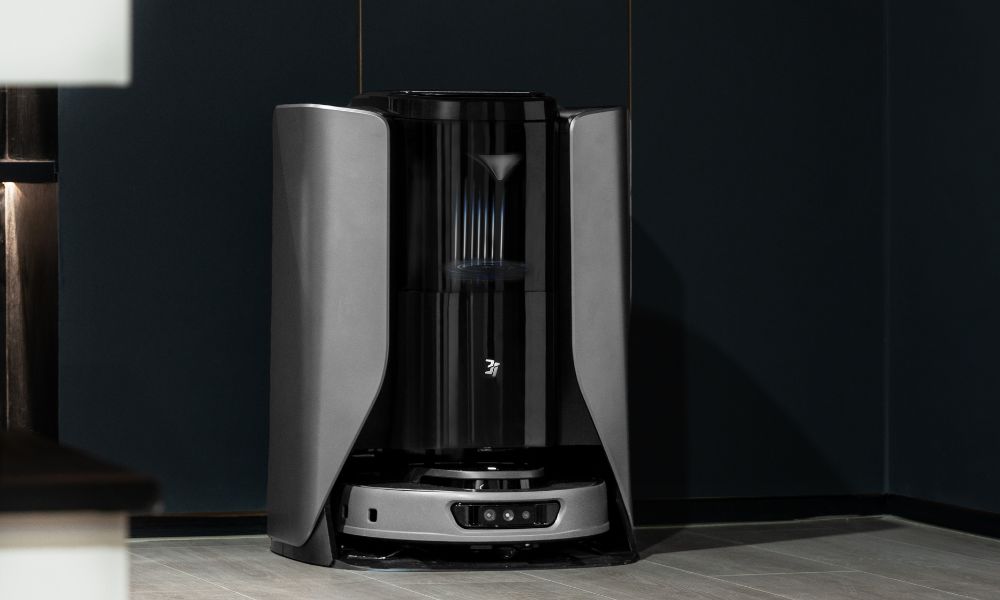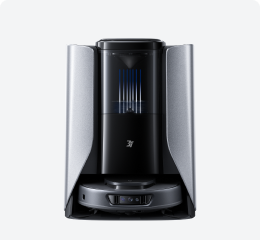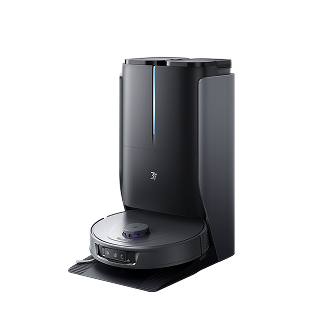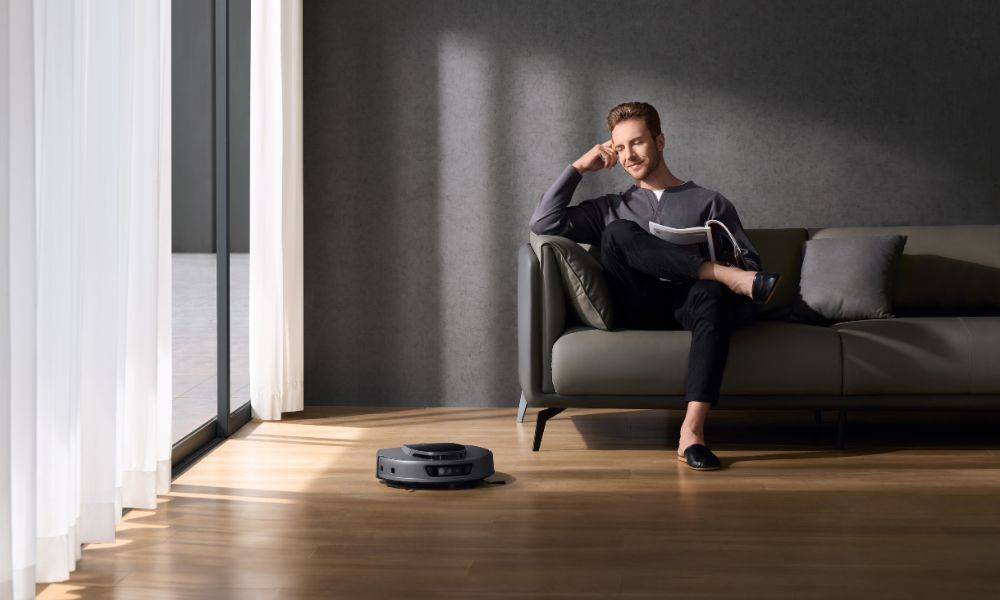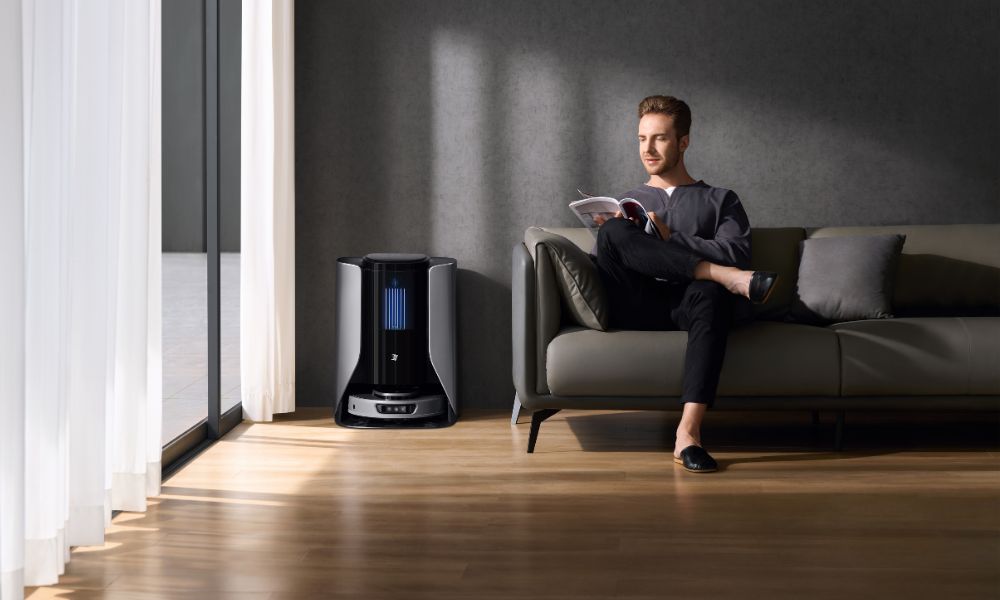As your robot vacuum cleaner ages, its battery capacity naturally decreases, resulting in shorter cleaning times and reduced performance. Replacing the battery is an easy and cost-effective way to restore its efficiency without having to replace the vacuum cleaner with a new one.
Below, we'll show you how to tell when it's time to replace the battery and walk you through the simple steps to do so.
How Long Does a Sweeping Robot Battery Last?
The battery in a robot vacuum cleaner will typically last between 1 and 3 years, depending on how often you use it and how well you take care of it. That’s because most robot vacuum cleaners come with lithium-ion batteries, which are known for being efficient and durable. However, factors like how often you use it, how long you spend cleaning each time, and the environment you work in can affect the lifespan of your battery.
To get the most out of your battery, it's important to follow some basic maintenance tips. For example, try not to let the battery drain completely too often, and keep your vacuum cleaner in a cool, dry place while it's charging. Avoid using your robot vacuum cleaner in a bathroom that's full of water. Some self-cleaning robot vacuums also have a power-saving feature, so it’s best to check your owner’s manual for specific tips for your model.

How Do I Know If My Robot Vacuum Needs a New Battery?
If your robot vacuum cleaner shows any of the following signs, you may need a new battery:
1. Reduced Cleaning Time: If your sweeping robot isn't running as long as it used to even after a full charge, the battery may be nearing the end of its life.
2. Frequent Charging: If you notice that your vacuum cleaner parts need to be charged more often than usual, it could be a sign that the battery is no longer holding a charge.
3. Inability to Return to the Charging Dock: A battery that is too weak may cause your self-empty robot vacuum to stop cleaning before it returns to the charging dock. This happens because the battery can't provide enough power for the vacuum to complete its tasks.
4. Battery Warning Alerts: Many robot vacuums come with built-in alerts that notify you when the battery is getting low. If you see these warnings, it may be time to replace the battery.
5. Decreased Performance: If your quiet robot vacuum starts moving slower or has trouble navigating, it could be a sign that the battery isn't providing enough power to its motor.
Can You Replace the Battery in a Sweeping Robot?
Yes, in most cases you can replace the battery in your robot vacuum. While some models have sealed batteries that are more difficult to replace, many brands of vacuums are designed with user-replaceable batteries for ease of use. Note that replacing the battery requires unscrewing the base plate, disconnecting the old battery, and installing the new one.
It’s always a good idea to consult your owner’s manual for specific instructions and make sure you’re using the correct replacement battery for your model. Many manufacturers also offer professional battery replacement services if you’re uncomfortable replacing the battery yourself.
How Do I Replace My Robot Vacuum Cleaner Battery?
Turn off the Vacuum Cleaner
First, turn off the robot vacuum cleaner to avoid accidentally starting it. If your vacuum cleaner has a power switch, just turn it off, or you can remove it from the charging dock. This ensures that you are safe while using it. In addition, removing the dustbin will give you more space to handle everything.
Remove the Bottom Plate
Use a small screwdriver to carefully remove the screws that hold the bottom plate in place, putting the screws in a safe place so that they do not get lost. Once the screws are removed, gently lift or slide the panel off to expose the battery. Be careful not to damage any internal wires or parts when doing this.
Disconnect the Old Battery
Find the battery and gently unplug the connector, making sure to pull on the connector itself, not the wires, to avoid any damage. If the battery is stuck, check if there are any clips or extra screws holding it in place. Once removed, carefully remove the old battery.
Install the New Battery
Place the new battery in the battery compartment, making sure the battery is securely installed. Align the connector and insert it firmly to ensure a secure connection. Double-check the orientation of the battery again to ensure that the battery is installed correctly. A secure connection is essential for the self-empty robot vacuum to work properly.
Reinstall the Base Plate
Now, align the base plate with the vacuum cleaner and press it back into place. Secure the panel with the screws you removed earlier. Make sure the screws are tight, but not too tight, as overtightening can damage the panel or the vacuum cleaner parts.
Charge and Test the Vacuum Cleaner
Put the vacuum cleaner back in the charging dock and fully charge it. Once charged, please turn it on and do a test clean. Note its performance to make sure the new battery is working properly. If everything looks good, you're ready to go!

How Often Should You Replace a Robot Vacuum?
How often you should replace your robot vacuum depends on how often you use it and how well you care for it. On average, most robot vacuums last between 2 and 4 years before performance starts to decline, especially due to battery wear. If you notice that your quiet robot vacuum is taking less and less time to clean, has trouble returning to its charging station, or its suction power is weakening, it may be time to replace your vacuum.
In addition, regular maintenance, such as cleaning the brushes, filters, and sensors, can significantly extend the life of your vacuum. However, if the battery no longer holds a charge or repairs are too expensive, it may be more cost-effective to replace the entire vacuum than to continue repairing it.
Summarize
Replacing your robot vacuum's battery is an easy and cost-effective way to restore its performance. By recognizing the signs of battery wear and following simple replacement steps, you can extend the life of your vacuum without having to replace it with a new battery. Combined with regular maintenance to keep your vacuum running smoothly, you'll have a brand-new robot vacuum that navigates smartly and avoids no-go areas quickly.
Related Reading: Best Robot Vacuum for Hardwood Floors



